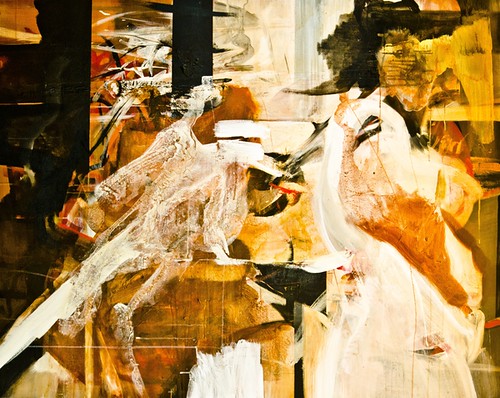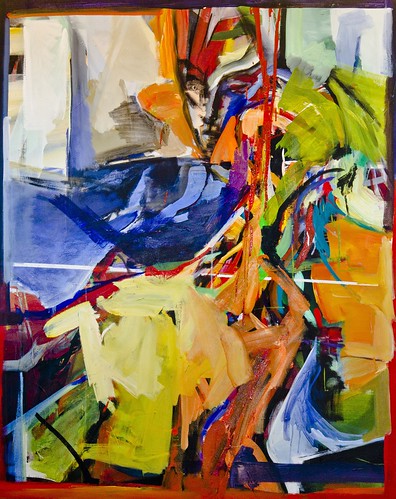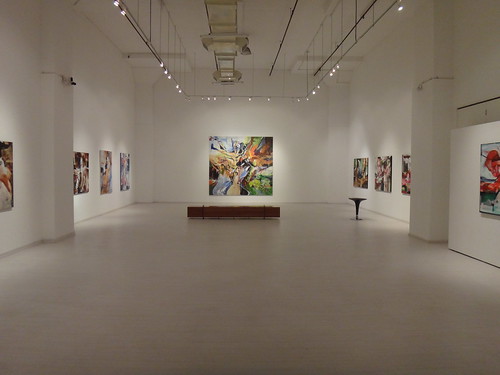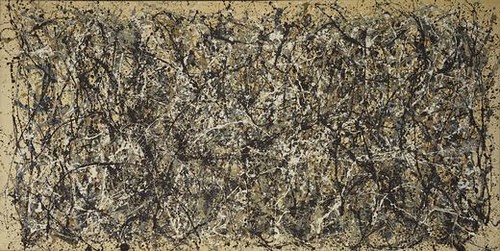With the advent and subsequent popularity of new media, performance, installation and conceptual art since the 1970s, the relevance of painting in contemporary art has been said to become questionable. These nascent art forms made an impact by being mediums for the expression of provocative and political issues of race, gender, class and sexuality. Furthermore, such new forms represented multifarious identities in contemporary society, promoting inclusion and acceptance. In her collection of essays, “On Photography”, Susan Sontag cites that “photography implied the capture of the largest possible number of subjects. Painting never had so imperial a scope”.
It might seem that the fate of painting were in dire need of exigency and revitalization. However, much can be derived from painting in contemporary art. Philosopher and art critic Boris Groys declared that painting is “where the visual vocabulary of the contemporary mass media can be critically compared to the art heritage of the previous epochs”, highlighting the comparative value and necessity of the history of painting in today’s context.
As a genre, painting leaves a more lasting and unique physical imprint than newer art forms such as performance and photography. Performance art expires after it has been presented to an audience, and seldom leaves behind visible artistic traces. Painting, however, manifests a physical entity, able to be appreciated for centuries. A painting is also unique; regardless of how skilled or meticulous a painter might be, he would find it almost impossible to recreate one of his own works. In contrast, photographs can be easily taken and reproduced, and are not exclusive or irreplaceable. Evidently, the chronological vastness and significance of painting cannot simply be undermined, and young painters like Jana Benitez seek to add nuance to the genre through their reinterpretations.

Jana Benitez, “Tokyo Tango”, 121.9 x 152.4 cm, acrylic on canvas, 2012
Currently holding her first Singaporean solo exhibition, “Incarnate”, at Galerie Steph, Benitez’s paintings impress in both scale and intensity. Armed with an unabashed use of colour, her work is reflective of the conventions of the Abstract Expressionist style, one that, as E. H. Gombrich stated, involved “the sheer handling of paint regardless of any ulterior motive or purpose”. While she adheres to the AbEx school of thought, Benitez injects humanistic essence into her work, mostly in the forms of faces and the human body, echoing Abstract Expressionists like Willem de Kooning, who introduced human figuration into his art.

Jana Benitez, “Metamorphosis”, 152.4 x 121.9 cm, acrylic on canvas, 2012
While her figurative work demonstrates sensitivity and emotional maturity, I was reminded of the similarities between the art of modern master Jackson Pollock and Chinese calligraphy while looking at her abstract canvases, housed in a much more expansive gallery beside Galerie Steph’s main space.

Galerie Steph’s secondary space, featuring Benitez’s abstract works
In “The Story of Art”, E. H. Gombrich writes: “it is not the formal beauty of characters that the Chinese admire so much as that feeling of mastery and inspiration that must inform every stroke”. Like Chinese calligraphy, Pollock’s paintings “must be done rapidly. They should not be premeditated but rather resemble a spontaneous outburst”.
 /
/
Jackson Pollock, “One (number 31, 1950)”
Benitez’s wall text accompanying her abstract work illustrates similar sentiments, reminiscent of this elusive, ineffable “feeling”: an intuitive, guttural force behind the creative processes of both Pollock and the Chinese masters. She describes her creative process as “inspired by intense physical sensations and developed through intuition”. Consequently, a certain impatience and power can be discerned from her abstract compositions.
Young painters like Benitez work with a time-honoured genre, not without the pressure of continuing and extending its revered tradition in contemporary art. Whether or not painting has regained significance seems too colossal a question for one person to say, but with more artists like Benitez around to carry on its legacy, the future of painting seems optimistic.
*Jana Benitez’s solo exhibition at Galerie Steph, “Incarnate”, runs through 30 June 2012. Galerie Steph is located at 39 Keppel Road, Tanjong Pagar Distripark, #01-05, and is open Tuesdays – Saturdays, from 12 – 7 pm. For more inquiries, please contact Steph at +65 9176 8641 or steph@galeriesteph.com. You may also wish to visit www.galeriesteph.comfor more information on past and future exhibitions.

Wong Bing Hao
is an independent art writer. His primary interests include performance, performativity, social practice, institutional critique and the public within contemporary art. He currently reads History of Art at University College London.